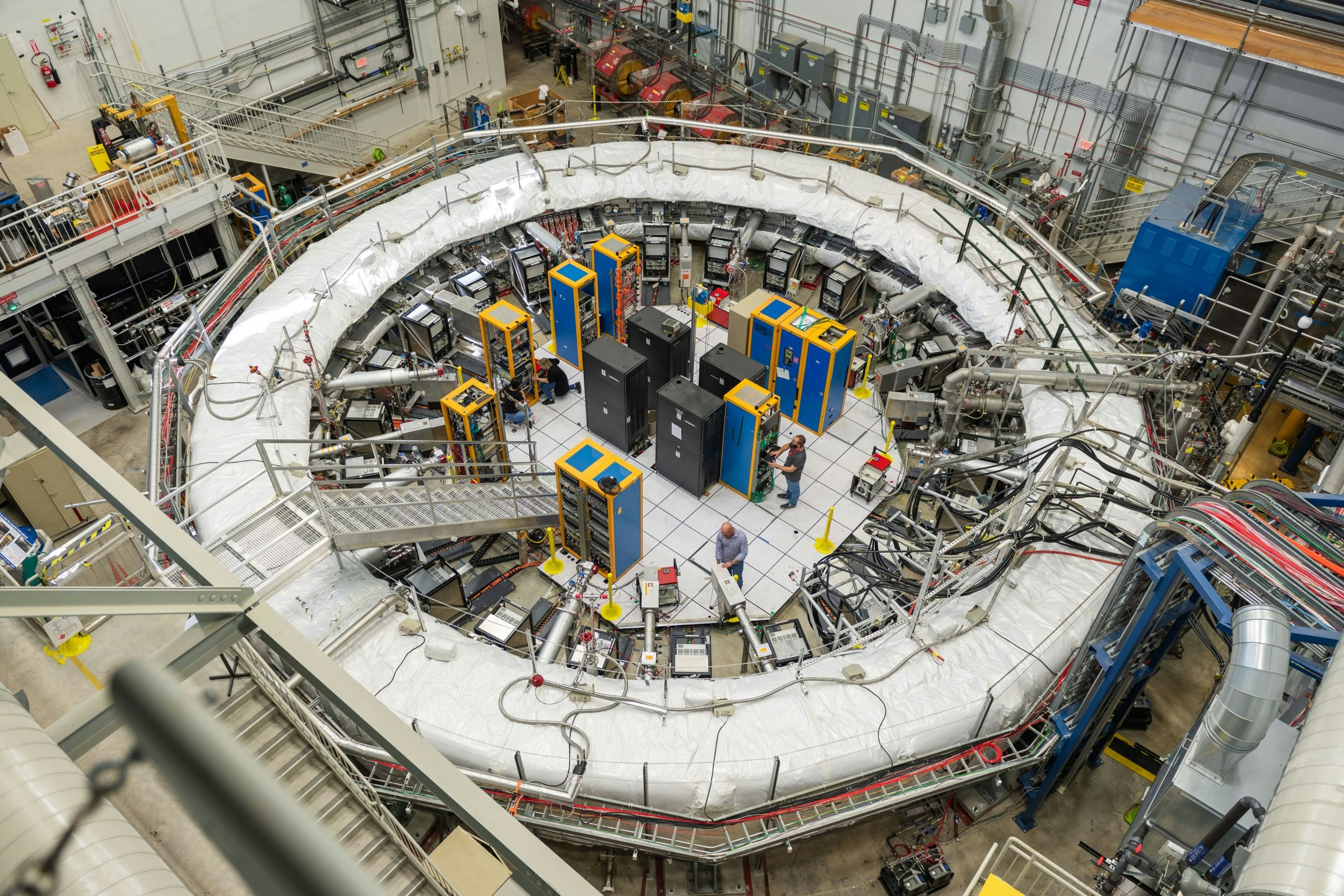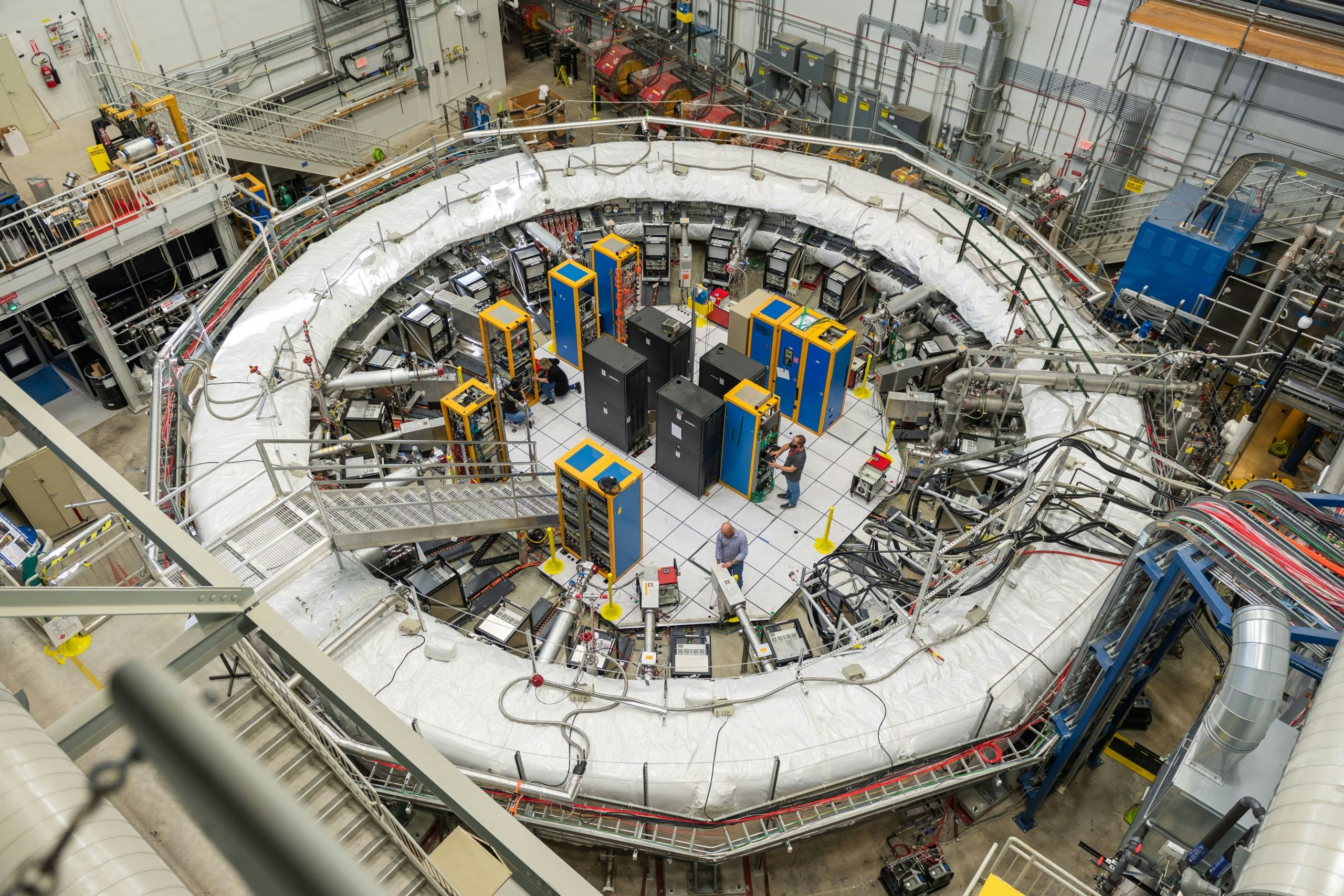
Physicists may have yet another fundamental particle left to discover.
When physicists at the Large Hardon Collider discovered the Higgs boson back in 2012, they’d found the last missing piece of the universe — or so it seemed. The equations that describe how the universe works at its smallest scale, called the Standard Model, had long sported a blank space for one more boson, a particle that carries energy and force (a photon is also a type of boson). But new data from experiments at the Fermi National Accelerator Laboratory, or Fermilab, seem to suggest that there’s another blank space in the Standard Model for physicists to fill in.
Particles called muons wobble when you put them in magnetic fields, and a team of more than 200 physicists in seven countries have spent the last six years measuring the speed of those wobbles. Muons wobble a little differently than the Standard Model predicts, and that may mean that there’s something missing from the Standard Model — something physicists haven’t even realized they were missing. The missing term could be a fundamental force of nature or a new type of particle, or it could be nothing at all.
The collaboration of physicists announced their findings in a recent press release and submitted a paper to the journal Physical Review Letters.

Hints of Unmapped Physics
Physicists at the Fermi National Accelerator Laboratory spent the last six years measuring how fast subatomic particles called muons wobbled in response to a powerful magnetic field. (Muons are negatively-charged particles about 200 times more massive than electrons; like electrons, they’re fundamental particles, which means they’re not made up of any smaller bits.) That sounds esoteric, but it’s the key to understanding something fundamental about how our universe works.
The Standard Model predicts how fast a muon should wobble in a magnetic field, and it also predicts exactly how tiny subatomic particles flickering in and out of existence nearby can subtly nudge the wobbling muon. But in real-world experiments, muons seem to wobble at a very slightly different speed than the Standard Model predicts.
So what does that mean? Either something is missing from the equations of the Standard Model, or the numbers physicists have been plugging into those equations just weren’t quite precise enough.
It could mean that there’s a blank spot left on our map of physics, such as a previously unimagined type of fundamental particle. If future experiments and calculations point in that direction, it will send physicists on a hunt for a mystery particle that will rival the hunt for the Higgs boson.
On the other hand, it could mean, well, nothing.
What It Means (Maybe)
The newly-released measurement is called “g-2.” The letter “g” stands for what’s called the magnetic moment, or how much muons tend to line up with magnetic fields (you can calculate “g” if you know the strength of the magnetic field and the precession speed of the muons flying through it). The Standard Model predicts that “g” should be 2, but real measurements are never exactly 2. Physicists hope the difference between theoretical “g” and real-world “g” (written as “g-2”) will help test the Standard Model.
According to the latest calculations from the new batch of FermiLab data, g-2=0.00233184110. That’s a tiny number, but contained in that tiny number could be subtle influences from physical forces or types of matter that physicists have never even imagined.
It could also be a sign that the data physicists used to build the Standard Model needed to be more precise.
The Standard Model and its predictions depend on extremely precise data about tiny subatomic particles, their properties, and their behavior. Another team of researchers recently published some new, more precise measurements for some of those data. And yet another team recently calculated a new prediction of how fast muons should wobble, based on a different theoretical model.
The researchers at Fermilab spent the past six years gathering data, and their newly-announced value of “g-2” is the product of the first four years of data. Early last month, the muon beam shut off for the last time (for this experiment, anyway), and physicists will spend the next two years analyzing all of the six years’ worth of data, which should give them the answer they’re looking for. Sometime in 2025, they’ll release a new value for “g-2” with even fewer uncertainties than this one.
It’s entirely possible that the new measurements and the new experimental data will resolve the whole thing. Or maybe quantum physics is about to get rewritten. Time will tell.







